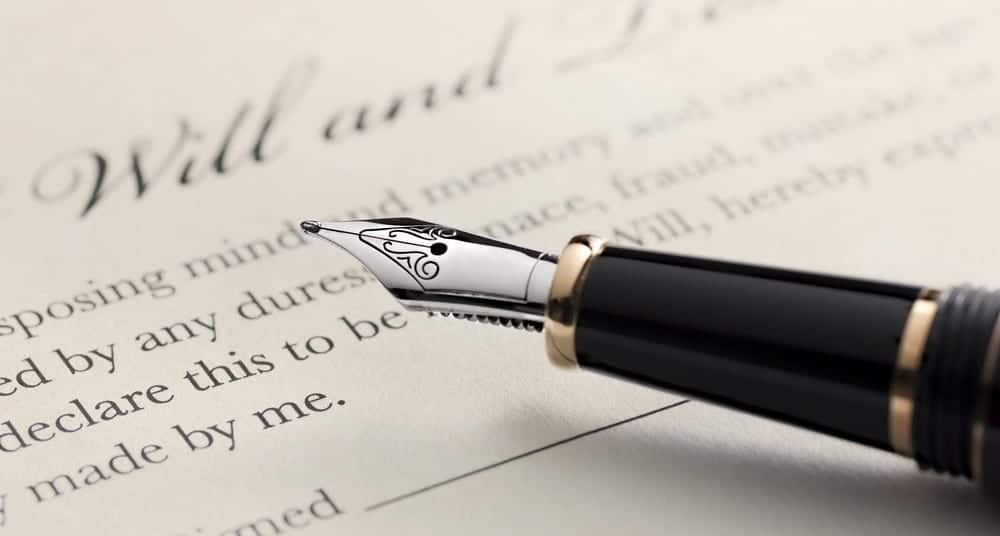While people may not think they have enough resources or are too young to set up an estate, that’s simply untrue. Estate planning alleviates the stress and uncertainty of what will happen to assets. It also prevents family arguments and avoids straining relationships during an emotional time.
While making end-of-life preparations doesn’t sound like an enjoyable experience, the reality is that they give you control throughout your life and beyond. Establishing a concrete plan for your end-of-life care and investments, will make it a little easier for your loved ones and simplify the probate process.
Four essential sections of Minnesota estate planning are needed: Living wills, living trusts, durable power of attorney, and a last will and testament. Learn more about each of these legal documents to help you prepare and protect your estate.
Establish a Living Trust
Estate planning has several key areas that you need to accomplish, starting with one of the most important documents: a living trust.
A living trust controls the distribution of your possessions and property to particular beneficiaries after you pass. This legal document allows your loved ones to avoid going through probate before distributing your assets which is a big deal since probate hearings can last for several months or years.
Learn more about what items are covered by a living trust below:
- Bank Accounts
- Stock Portfolios
- Properties
- Care of Pets
- Vehicles
- Expensive Items
How Do You Establish a Living Trust?
To set up a living trust for yourself, you’ll need to fill out a legal document known as a Declaration of Trust. Since you are establishing this trust, you become a grantor. This role allows you to designate which beneficiaries get what property, expensive investments, and other vital items.
When creating this document, you will also need to list a trustee responsible for dividing and managing your assets according to your wishes. This individual will assume control of the trust on your behalf either before or after you die.
Since there are two types of living trusts, revocable and irrevocable, let’s take a closer look at how they work.
- Revocable: This is the most common type of living trust for its flexibility. Once created, you can easily make modifications throughout your lifetime, such as selling off property, naming beneficiaries, and any other changes. Just make sure you add a successor trustee to manage your estate per your desires after your passing.
- Irrevocable: This living trust does not allow changes to be made once created. This trust is used explicitly for avoiding taxes and the potential seizing of assets to cover end-of-life care. It works by removing the trustor as the owner of the listed assets. Since it’s more complicated to establish, you’ll need the assistance of a knowledgeable estate planning attorney to help sort out the details.
Living Wills
Another vitally important document is a living will. Even though they have similar names, a living will and a living trust have different legal purposes. This document oversees the health and medical procedures you prefer if you can no longer advocate for yourself.
A living will is clustered with other vital documents to form an advanced directive. An advanced directive is a combination of documents relating to end-of-life care preferences- including a Do Not Resuscitate (DNR) order, organ donation instructions, establishing medical power of attorney, and more specific details.
You have the right to determine how you are medically treated once you are incapacitated; the caveat is that your preferences are only protected if you have a current living will.
Specific medical considerations are covered by living wills, such as those listed below:
- Life-sustaining medical treatments
- Feeding or breathing tube assistance
- Other end-of-life preferences
In an advanced directive, you appoint a power of attorney who will make these decisions and represent your best interests if you become incapacitated. The last thing you want to worry about is prolonging or ending your life against your wishes which could happen if there is any legal grey area. A living will adds clarity and leaves your best wishes in good hands.
Durable Power of Attorney
Unfortunately, life is unpredictable, and an accident or illness associated with aging could leave you in a vulnerable place. That is also why it’s essential to include a durable power of attorney document. This legal document must be written and signed when the signee is of sound mind to be used alongside a living will for all end-of-life care decisions.
There is a slight difference between a power of attorney and a durable power of attorney, which is essential to note. A regular power of attorney is able to make end-of-life decisions as outlined in your advanced directive. On the other hand, a durable power of attorney makes critical health care decisions if you’re psychologically impaired.

Last Will and Testament
Now, this is where legal jargon gets confusing. Make sure you understand the difference between a living will and a last will and testament, commonly referred to as a will. While a living will solidifies your medical requests if you are incapacitated, a last will and testament provides legal instructions about what should happen to your assets after your death.
If an individual passes without a will, all of their assets go to the state’s intestacy laws which will then govern the distribution of property. Since this is not a desirable option, make sure to set up a last will and testament.
So, why should you have both a living trust and a will if they both focus on managing and protecting assets?
A living trust allows you to set up a trusted successor to manage your property and finances after you pass. If you have a revocable trust, you can also make modifications until you die. After your death, a last will and testament takes effect and helps appoint an executor to help pay off debts and taxes posthumously. It also designates a guardian for minor children to ensure they are protected.
To avoid estate division confusion and the continued care of your minor children, you will need both legal documents.
Start Your Minnesota Estate Planning Today!
The last thing you want at the end of your life is uncertainty about your medical requests, infighting between loved ones, or having your estate stuck in the probate process after you pass.
Creating a well-crafted estate plan following these Minnesota estate planning guidelines will help add clarity to an already difficult time. If you’re unsure where to begin, consult the professional estate planning attorneys at CJB Law to help simplify your process.

